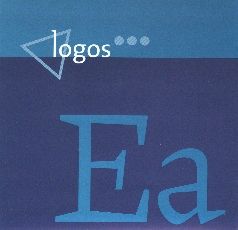- Kris De Baerdemacker: XplosiV (1999) (4:23)

In XplosiV geen geknal, de titel verwijst naar de werkmethode. Een tiental bewerkte p-klanken (plofklanken) is tot een klanktapijt gemonteerd (X=knippen, V=plakken), dat tijdens het stuk in gewijzigde vorm geplaatst wordt tegenover een aantal motieven met verkorte geluiden van een basdrum, een bamboestok en een metalen buis.
- Godfried-Willem Raes: Standing Waves (1982) (10:35)

Standing Waves komt voort uit Godfried-Willem Raes' uitgebreid onderzoek naar radar en sonar toepassingen in het ontwerpen van muziekinstrumenten. Deze technologie laat toe de koncertruimte zelf om te toveren tot muziekinstrument door gebruik te maken van haar akoestische eigenschappen.
Een hele reeks grote en erg kleine luidsprekers zijn over de ruimte verspreid. Met een instelbare zender wordt de ruimte met ultrasonen gevuld. Op verschillende plaatsen worden ultrasoonontvangers opgesteld. Vervolgens worden een aantal resonatoren (waaronder enkele erg lange veren of staalbanden waarvan de uiteinden telkens aan een luidsprekerkonus bevestigd zijn) net onder het 'feedback' niveau afgesteld. Deze resonatoren beginnen te trillen van zodra hun resonantiefrekwenties overeenstemmen met bepaalde verschilfrekwenties die door het geluidssysteem de ruimte ingestuurd worden.
De uitgangen van de ultrasoonontvangers worden, na demodulatie waarbij de doppler verschuivingen naar het audio bereik worden verschoven, opgesplitst: ��n deel gaat, zonder veel manipulatie, naar de meerkanaalsmixer en dient hoofdzakelijk voor de spatialisatie. Het andere deel gaat naar een tweede mixer waarvan de uitgangen op hun beurt de modulatiebron vormen voor de ultrasoonzender.
Wanneer de hele opstelling wordt aangeschakeld gebeurt er helemaal niets. Het stuk komt pas tot leven van zodra de uitvoerder lichtjes de ultrasoonzender beweegt en zo de knopen van de klankgolven scant. Dit veroorzaakt modulatie van de klankbron en tezelfdertijd de opbouw van 'feedback'. Het zijn de karakteristieken van deze 'staande golven', die bespeeld worden door in de ruimte te bewegen.
Het stuk, zoals het te horen is op deze opname, is een mixdown van de (analoge) real time meerkanaalsopname door de auteur gerealiseerd in 1985 in de kleine Logos Koncertstudio.
- Kristof Lauwers: Processing #5
(1999) (5:55)

Voor Processing #5 ben ik vertrokken van een groot aantal korte 'cutlery'-geluiden. Deze komen zowel in hun oorspronkelijke vorm voor, als met een beperkt aantal bewerkingen zoals stretching, filtering en reverb. Het geheel is gemonteerd op Soundscape, het bewerken van de opgenomen geluiden gebeurde met Soundscape, Samplitude en met een Lexicon digital effect processor.
- Kris De Baerdemacker: Splash
(1998) (3:33)

Splash is een kort, cyclisch stukje. Geluiden van een gong en een regenmaker scheppen een onweerachtige sfeer die ontlaadt in een storm van vervormde watergeluiden. De rust keert terug met een gongslag en de zachte ruis van een regenmaker, de watergeluiden sterven uit…
- Moniek Darge: Dark Waves (1981) (10:18)

Tijdens de aan en afrollende golven elektronische klanken, wordt licht geprojekteerd door de kleine perforaties van een hardboard plank en wel op zo'n manier dat een veelheid aan steeds veran-derende stippen en lijnen over de ganse verduis-terde ruimte zichtbaar worden. Op die manier wordt een auditieve en visuele oceaan van donkere golven gekre�erd.
- Francesca Verbauwhede: Canned
(1997) (5:42)

De fundamentele gedachte achter "Canned" was om een soort monochrome "Musique Concr�te" te maken, waarbij uitsluitend gebruik gemaakt wordt van gelui-den afkomstig van ��n enkele klankbron. Als symbool van de hedendaagse samenleving spreekt het blik erg tot de verbeelding. Zo werden de 6 minuten van "Canned" gedestilleerd uit meer dan een uur geluiden geproduceerd met blikjes. Als kompositie kan het gehoord worden als een muzikaal skript, waarin het verhaal van een blik verteld wordt, akoestisch evoluerend van het konkrete naar het abstrakte.
- Moniek Darge: Sand (1980) (22:38)

Sand is een elektro-akoestische kompositie bestaande uit twee hoofddelen. Het eerste meditatieve deel, voor tape en uitgezochte slagwerkinstrumenten, is verdeeld in vijf sets, die samen een seizoenscyclus vormen, beginnend en eindigend met winter. Het tweede, korte deel op het einde, is hieraan volledig tegengesteld. Een plotse schreeuw van een luisteraar uit het publiek, verbreekt op slag de meditatieve sfeer en veroorzaakt het onmiddellijk stilvallen van de elektronische tape. Beide performers gaan wel door met het bespelen van hetzelfde slagwerkmateriaal, maar op een hektische, frenetieke manier, die maximaal kontrasteert met het meditatieve eerste deel.
- Kristof Lauwers: Processing #2 (1998) (8:39)

Processing #2 is een algoritmische kompositie, gebaseerd op kontinue transformaties, in vijf stemmen, van een thema, dat in zijn originele vorm nooit voorkomt. Van het oorspronkelijke computerprogramma, met beperkte real-time interaktiemogelijkheden, werd voor deze versie een 'MIDI-opname' gemaakt, waarvoor ik patches gekozen heb op een Proteus EMU 100 synthesizer, en waaraan ik nog envelope-controllers heb toegevoegd. Toonhoogte, ritme en panning zijn algoritmisch bepaald.
|



![]()
![]()

![]()
![]()